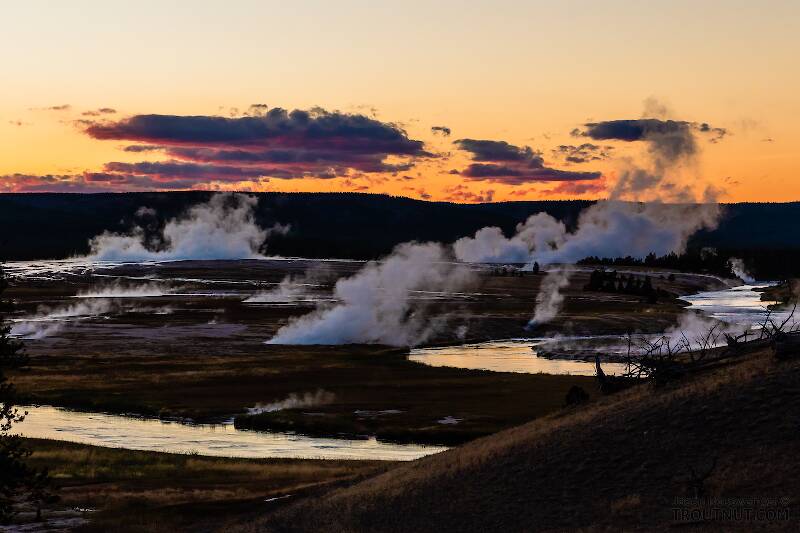
Blue-winged Olives
Baetis
Tiny Baetis mayflies are perhaps the most commonly encountered and imitated by anglers on all American trout streams due to their great abundance, widespread distribution, and trout-friendly emergence habits.
Featured on the forum
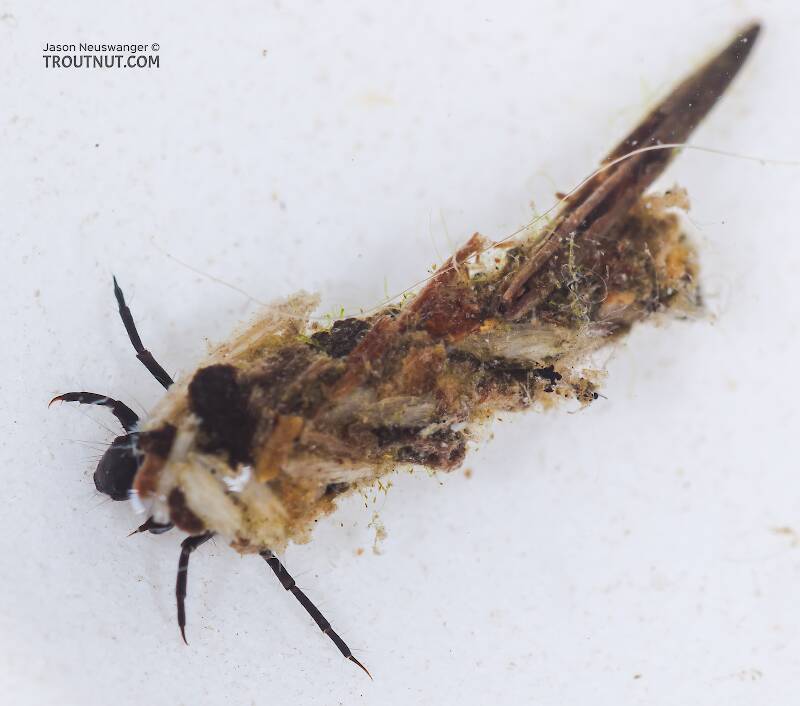
This seems to be a young larva of Limnephilus. Although not clear in the picture, several ventral abdominal segments have chloride epithelia.

Troutnut is a project started in 2003 by salmonid ecologist Jason "Troutnut" Neuswanger to help anglers and
fly tyers unabashedly embrace the entomological side of the sport. Learn more about Troutnut or
support the project for an enhanced experience here.
Siphlonurus quebecensis (Gray Drake) Mayfly Nymph Pictures
I photographed this nymph in the middle of molting between one instar and the next (not hatching).
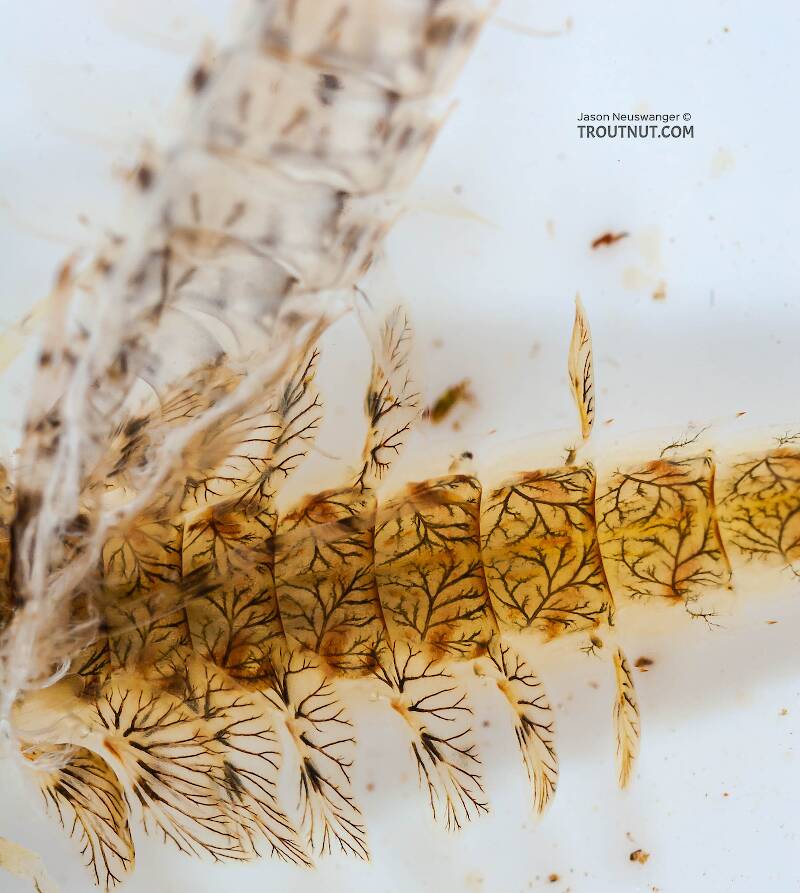
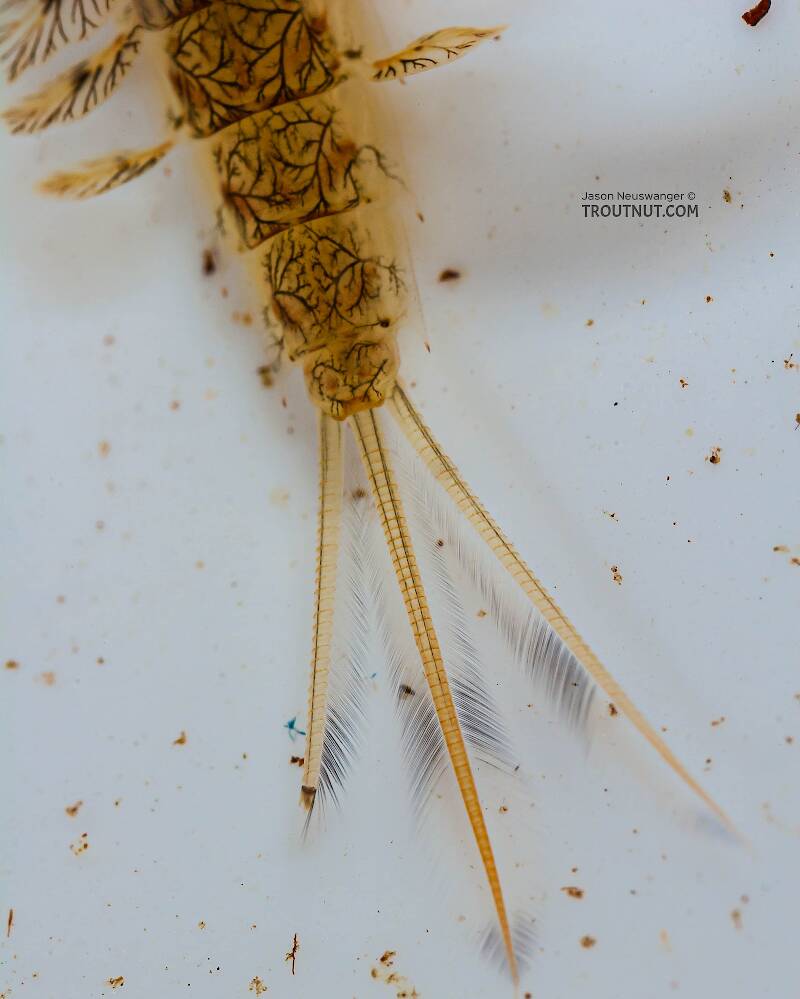
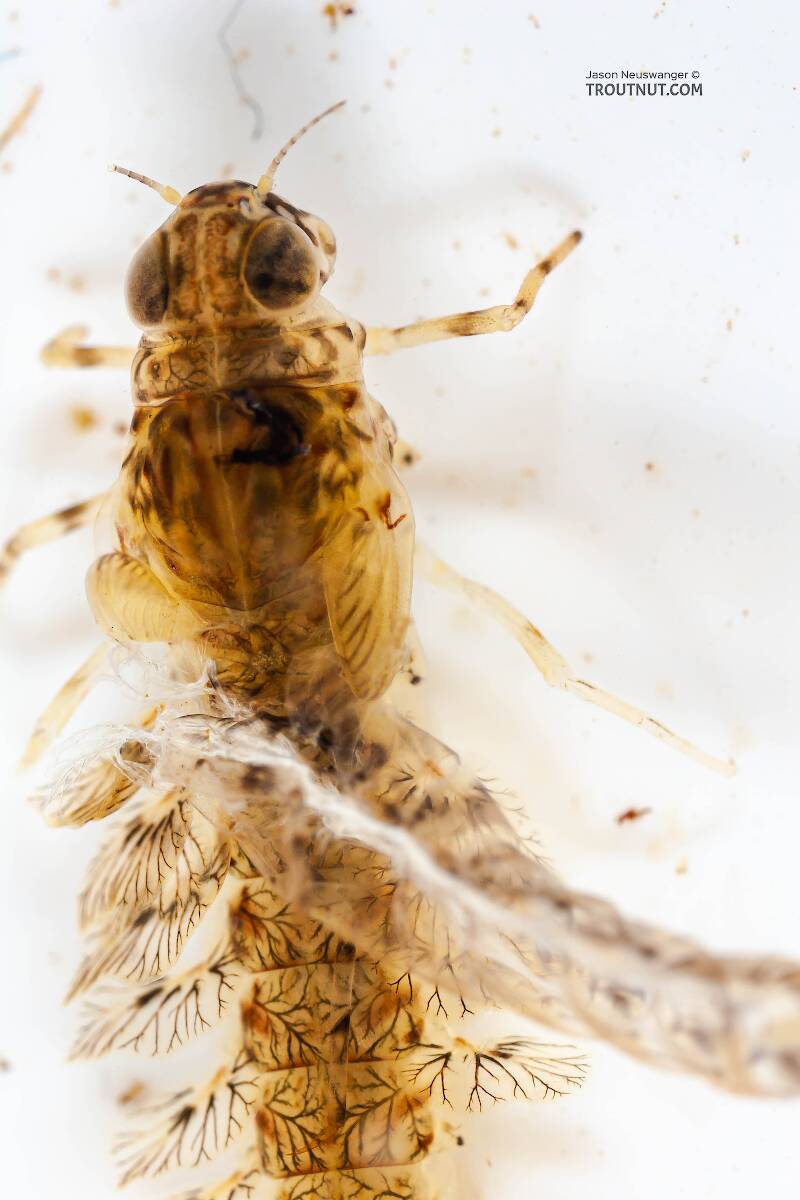
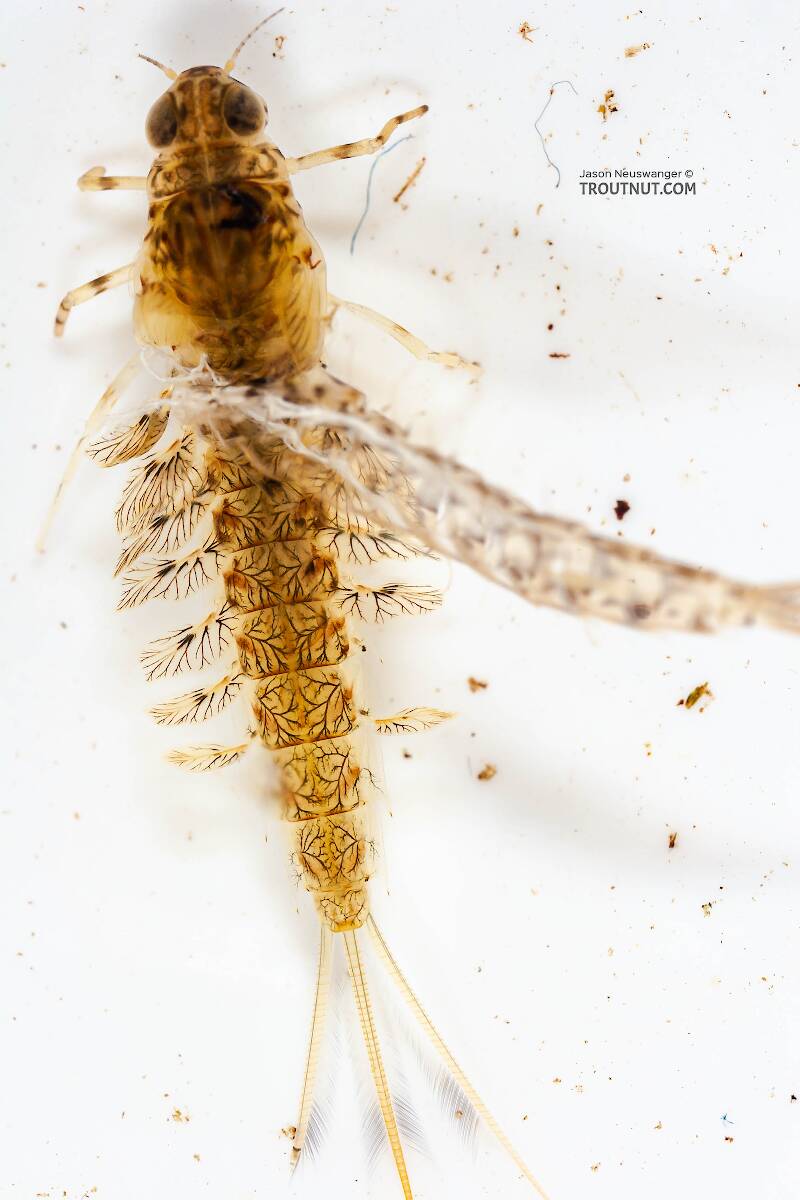
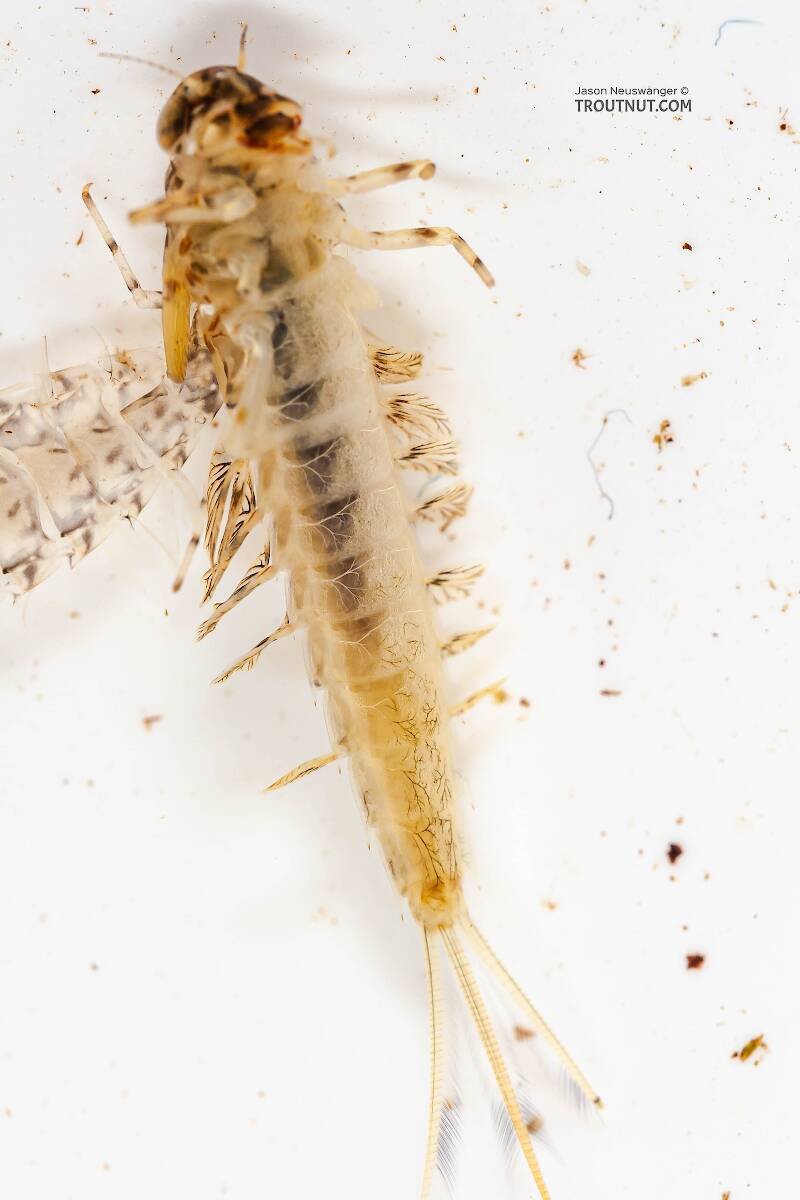
This mayfly was collected from the Delaware River in New York on May 13th, 2007 and added to Troutnut.com by Troutnut on May 18th, 2007.
Discussions of this Nymph
Gray Drake Photos
Posted by Oldredbarn on May 12, 2010
Last reply on May 12, 2010 by Oldredbarn
Jason,
These are absolutely wonderful photos! What lens did you use?
I have always thought that when the mayfly molted it did it somehow along the same lines as when it's emerging in to the adult. Where the wing pad splits and they basically emerge through that opening. This appears more like a snake shedding its skin and it appears to have split along the bottom of the insect and the exuviae just flakes off.
The detail of the veins throughout is incredible.
I guess there is nothing "gray" about the younger version of the nymph, eh?! I hope you haven't started Spence in to thinking that he needs to tie up some transitional nymphs! It's bad enough now all the stages we are trying to imitate!
Spence
These are absolutely wonderful photos! What lens did you use?
I have always thought that when the mayfly molted it did it somehow along the same lines as when it's emerging in to the adult. Where the wing pad splits and they basically emerge through that opening. This appears more like a snake shedding its skin and it appears to have split along the bottom of the insect and the exuviae just flakes off.
The detail of the veins throughout is incredible.
I guess there is nothing "gray" about the younger version of the nymph, eh?! I hope you haven't started Spence in to thinking that he needs to tie up some transitional nymphs! It's bad enough now all the stages we are trying to imitate!
Spence
Start a Discussion of Nymph
Siphlonurus quebecensis (Gray Drake) Mayfly Nymph Pictures
Collection details
Location: Delaware River, New York
Date: May 13th, 2007
Added to site: May 18th, 2007
Author: Troutnut
Date: May 13th, 2007
Added to site: May 18th, 2007
Author: Troutnut

